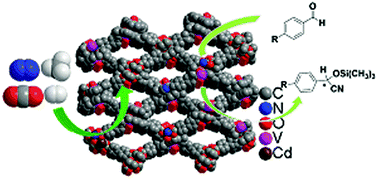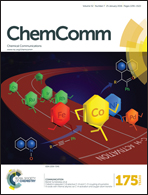A homochiral vanadium–salen based cadmium bpdc MOF with permanent porosity as an asymmetric catalyst in solvent-free cyanosilylation†
Abstract
A homochiral vanadium–salen based MOF with the pcu topology is constructed via in situ synthesis under solvothermal conditions. The synthesized MOF exhibits BET surface areas of 574 m2 g−1, showing the highest H2 adsorption capacity (1.05 wt% at 77 K, 1 bar) and the highest CO2 uptake (51 cm3 g−1 at 273 K, 1 bar) for currently known salen-based MOFs. This framework shows excellent performance as an asymmetric catalyst in solvent-free cyanosilylation.



 Please wait while we load your content...
Please wait while we load your content...